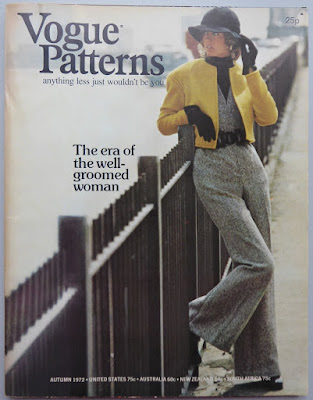Yesterday I went to
"An Archive of Stitches - The Living Histories, Geographies, and Biographies of our Clothes" an event organised by Dr Rebecca Collins and Professor Deborah Wynne of the University of Chester as part of the
Being Human festival. The purpose of the day was to explore ways of breaking through our current unsustainable relationships with garments, and celebrate the value of remaking, repurposing, and repairing clothing.
The first speaker was Holly Kirby, assistant curator at Attingham Park in Shropshire, who I had met in June when she gave a
fascinating presentation on the property's costume collection. This time she spoke on
"What historical fashion can teach us about sustainability". Holly first started working at Attingham as a volunteer costumed interpreter and has made various costumes for herself over time.
The first one she made was a linen dress for her role as a maid, and was all hand sewn. This gave her a keen understanding of just how long it took to make clothes in the past, and also the merits of wearing natural fibres. Although later she started using a hand crank sewing machine and moved up the social scale in her dress, she has retained the notion of making both fabrics and clothing last. For example, when the sleeve of a Regency day dress got stained, she cleverly made a set of decorative oversleeves and a matching sash to both hide the mark and remodel the dress in a newer style.
Holly then widened her talk from her own experiences and spoke about the dress of Jane Austen, Charlotte Bronte, and Lady Berwick. She also discussed the wealth of clothing care information contained in household guides of the time, to illustrate how much more clothing was valued in the past.
 |
| Holly in the costume she wore for her talk |
Deborah had invited attendees to bring along items of clothing which they had owned for some time, and these formed the basis of the next part of the day, an audience discussion about clothing. I wore my
Autumn Roses dress and my
Simplicity 4896 coat as examples of my vintage dress*, and brought along the oldest me-made in my wardrobe and the pattern I used to make it.
 |
| Batwing sleeves - so 1980s! |
Made in a woven check cotton, the pattern dates from 1982, and I'm fairly certain that I made around that time. Judging from the slightly iffy tension in the stitching, I suspect that it was probably made on the sewing machine we had in my hall of residence, which dates it 1982-84. (Yes, even in the early 1980s there were enough female students who sewed to warrant our having a sewing machine!)
 |
| I made view B |
I suspect that the pattern survived various clear-outs because the top was still in my wardrobe, so there was a possibility that I would make it again. I should add that the fact that I can still wear it says more about the bagginess of some 1980s clothing than the svelteness of me 40 years later, and also that I have opened up the pleats a bit at the bottom to make it fit better!
The discussion was lively and interesting. Other people had also brought along items they had made and the patterns they had used, which I always love to see. Many of the attendees were, like me, able to remember a time when fixing or repurposing damaged clothing was entirely the norm until it was finally consigned to the 'rag bag', but not before buttons, buckles, and anything else of possible use had been snipped off. Because I don't have children, modern education has passed me by, so I was astonished to hear from younger audience members that they had not been taught even basic sewing in school.
This bombshell provided some context for the last part of the day. Dr Rebecca Collins is a human geographer (it's surprising how many of us get into clothing-related fields!) with an interest in everyday material culture and sustainability. She has started running pop-up repair workshops on the university campus, and hosted a workshop in the gallery where the event was held.
Earlier this week, I noticed that the strap on my umbrella was starting to fall apart. It was an easy job to fix it, but it did get me thinking. As well as having the skills, I have collected a fair array of stitching paraphernalia in the 50-ish years I've been sewing. If I need to mend something, chances are that I'll already have everything I need for the job. So it's all very well to say that we should repair our clothes, but with thread now costing almost £2 a reel, if you don't sew already then replacing a button could be a costly fix. This is where Rebecca’s workshops come in. As well as teaching repairs she provides threads, needles, darning mushrooms - everything you could need. Watching people grapple with getting just the right degree of tension required for darning, I realised just how unthinkingly I do these things, and how great it is that people like Rebecca are prepared to spend time sharing their expertise with others.
From historical dresses to darning socks, it was definitely a varied day. But it was all united in the theme of the need to recalibrate our relationship with our clothing, and how this can be achieved. I thoroughly enjoyed it.
* - I will just gloss over the fact that my 1980s top now also counts as 'vintage'. In Liverpool One, the city's alarmingly shiny new shopping centre, there is now a huge
vintage store. Every time I pass it, I ponder afresh the Awful Fact that most of the merchandise seems to be from the 1990s!



























































